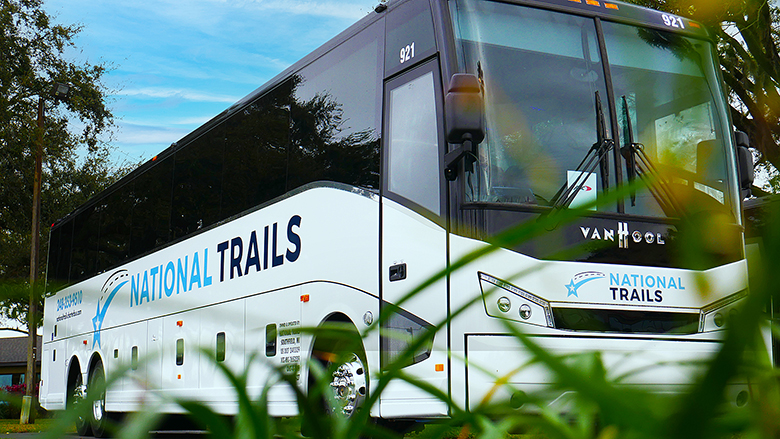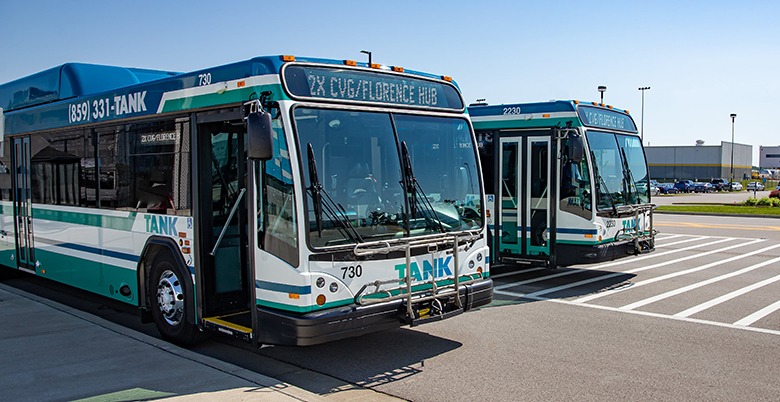Technology
- Welcome to the Jungle By:
Surviving the 100 Deadliest Days on the Road with Fleet Technology By: Erin Gilchrist Every summer, something shifts on our roads — and not in a good way. Between Memorial Day and Labor Day, traffic gets more chaotic, distractions go through the roof, and speed limits turn into suggestions. You’ve got teen drivers mixing with vacation traffic, and it all adds up to a dangerous stretch of time. They call it the ‘100 Deadliest Days’ — and trust me, it’s not just a catchy headline. The stats back it up, and if you run a fleet, this season demands your full attention. While this period represents less than one-third of the calendar year, it accounts for over one-third of all fatal crashes. In 2021 alone, there were a total of 39,508 fatal crashes and 42,939 crash fatalities nationwide. During the Fourth of July holiday of this same year, the average traffic fatalities per day was the highest compared to any other major holiday period in America. These figures are more than data points; they represent individuals who never made it home, many of whom were fleet drivers just trying to finish their shifts safely. With more than 20 years in fleet management, I’ve seen firsthand how summer becomes less of a season and more of a daily obstacle course. The fleets that succeed during these months are not relying on chance. Instead, they use technology that reads the road, enables smarter responses, and issues early warnings before risks escalate. When the Road Stops Playing Fair The 100 deadliest days aren’t marked by a calendar reminder. They announce themselves through heatwaves, tourist congestion, driver fatigue, and distraction you can’t see coming. Hazards don’t wait for permission. Hazards often emerge without warning, whether it’s an unexpected lane change, a distracted teenager behind the wheel, or construction rerouting traffic into unfamiliar areas. For example, fatal crashes involving teenagers increase by 20 percent during the summer months when schools are closed. These conditions create constant vulnerability for commercial drivers whose offices are on the road. Fortunately, these threats are no longer just anecdotal; they’re measurable. Telematics data consistently shows a surge in harsh braking, hard turns, and near-miss patterns during summer. That’s predictive, which is where safety wins. Proactive Safety Starts with Predictive Insight Predictive telematics systems now provide the visibility and insight required to proactively manage risk and passenger safety. By unifying AI-powered dash cams, real-time GPS, and driver behavior scoring into a single platform, modern fleet technology delivers more than retrospective reports; it enables forward-looking decisions that mitigate danger before it materializes. Fleets can use predictive analytics to pinpoint accident-prone intersections and adjust routes accordingly. Consider a situation where a rise in harsh braking alerts along a corridor prompted a closer look. That stretch became a detour route due to construction, introducing unpredictable merging behavior. Recognizing that pattern would allow managers to reroute drivers and reduce the number of alerts and close calls, ultimately avoiding incidents altogether. Another key advantage is the ability to deliver real-time coaching. Drivers receive immediate feedback on risky behaviors like following too closely or neglecting to wear seatbelts. This direct intervention helps correct habits on the spot and supports a culture of accountability without relying on delayed disciplinary actions. When issues are addressed in real time and constructively, drivers are more receptive and engaged. The misconception that telematics is merely a surveillance tool still lingers in some corners of the industry. But in reality, the right system acts less like a watchdog and more like a guide. It enables managers and drivers to understand trends, respond proactively, and collaborate on safer driving strategies. That clarity strengthens the entire operation. Rather than tracking for disciplinary action, the tools focus on what went wrong and how to fix it for next time. From Alerts to Accountability: Turning Data into Better Driving Behavior change doesn’t come from mandates; it comes from continuous education and feedback that resonates. For example, a shuttle driver may begin receiving frequent phone usage alerts despite having a clean safety record. Upon investigation, it might become apparent that the driver uses a personal phone for navigation because of a malfunction in the vehicle’s onboard system. When that system is restored, and the driver resumes using the proper tools, the alerts and distractions tend to disappear. This feedback loop demonstrates how minor issues, if left unaddressed, can lead to unsafe behavior that can be easily corrected with the proper intervention. Examples like this illustrate how data can reveal problems that aren’t immediately obvious and open the door to simple, effective solutions. Drivers are not always the source of the issue; sometimes they adapt as best they can without realizing safer alternatives exist. Prevention Over Payouts: A Smarter Model for Insurers and Fleets Telematics doesn’t just benefit the fleet. It provides insurers with an opportunity to align policy pricing with real-world behavior. Instead of basing premiums solely on historical averages, insurance providers can now offer incentive models that reward safe driving in real time. Fleets that adopt this approach report fewer incidents of distracted driving and, in turn, lower claims rates and operational costs. These technologies also contribute to safety well beyond fleet operations. Drivers consistently coached and monitored on the job often carry those habits into their personal lives. As their driving improves, community roads become safer, which benefits insurers, families, and municipalities. That behavioral shift has a lasting impact. Additionally, in an era of increasing legal and regulatory scrutiny, predictive telematics creates a defensible framework. Insurers and fleets can point to data as evidence of their proactive safety strategies. Having a documented record of preventive measures, real-time alerts, and coaching logs strengthens a fleet’s ability to demonstrate compliance and reduce liability. Safety Culture Takes Root in Daily Practice Culture is another area where technology makes a measurable difference. Safety culture can shift not because of posters or safety briefings but because drivers saw that we were serious about supporting them with meaningful data. Instead of Read More >
Motorcoach
- National Trails Continues Growth, Streamlines Charters with busHive By:
Since taking new ownership in 2019 with nine drivers, one office employee, and one mechanic, Michigan-based charter and tour company, National Trails, has seen tremendous growth. In the last three years alone, the company has more than tripled the number of employees, doubled its school bus fleet and increased its motorcoach fleet size by 15. “During this period of rapid growth, we have been incredibly reliant on our software,” said Austin Arksey, owner of National Trails. “If we didn’t have software like busHive, we would not have been able to scale as easily and as efficiently as we have.” According to Arksey, when he purchased National Trails in 2019, charters were managed via handwritten or typewritten messages being physically handed to drivers. One of the first initiatives the company undertook was digitizing these many processes, and that meant migrating the manual charter-booking into busHive. busHive provides cloud-based software to streamline workflows and recordkeeping across the entire charter process – from the initial quote to confirmations, contracts, generating driver itineraries, billing, and invoicing. National Trails uses the software to manage its sales, billing, and payroll – with reporting that shows revenue per vehicle, profit/loss analysis, and other important benchmarking tools. “As we are continuing to add additional fleet, busHive has been very instrumental in giving us the keys to have visibility to being able to see our trips on a daily, weekly, monthly, even annual basis as well,” Arksey said. “It has been very helpful to have solid software in place as we continue to grow.” However, rapid scalability often comes with its own set of challenges as National Trails well knows. With the accelerated addition of employees, Arksey said that ensuring new hires are fully trained and brought up to speed on how the company functions and operates has been one of the biggest challenges thus far. “As we’ve been hiring people, some of the things that we look at are people’s adaptability, are they quick learners, especially when it comes to working with software and technology,” Arksey said. “We are not looking at people that can solve and handle the challenges that we have just today, that can help us solve the challenges we have tomorrow and beyond.” Arksey said that busHive has been instrumental in helping National Trails keep track of driver credentials and expiring licenses. The driver management tool has also enabled the company to maintain certifications without having any lapse in downtime for drivers. With the influx of new coaches and new business, preventive maintenance (PM) is always a primary concern. With more buses in the fleet, National Trails has continued to prioritize preventative maintenance on all its equipment. All work orders are loaded into busHive, allowing the company to ensure that PM orders process correctly and that inventory is properly maintained. “With the busHive software, we transitioned our techs from doing work orders on paper to doing them on tablets so we could reduce the amount of time that it took for those work orders to get into our system and have quicker visibility to be able to make decisions on equipment,” Arksey said. “Our downtime was reduced, and we were able to better manage, monitor and maintain our preventative maintenance schedules.” Arksey said he and his team feel extremely comfortable utilizing the busHive charter system as National Trails continues to grow, citing the great support network which the company provides. “The busHive team has been great,” Arksey said. “In the many years we have been working with busHive we have not faced any outages. Anytime we have suggestions their team is always receptive to changes and interested in learning about new ideas. It has been a great partnership and experience.”
Transit
- TANK Enhances Data Collection with Avail Technologies By:
For over 50 years the Transit Authority of Northern Kentucky (TANK) has prioritized accessibility and ease of use for its ridership. Serving the Northern Kentucky region, including Boone, Campbell and Kenton counties, TANK has embarked on a transformative journey through the adoption of Avail Technologies’ computer-aided dispatch, automatic vehicle location solution (CAD/AVL). This partnership is part of TANK’s broader strategy to improve service efficiency, enhance communication, and elevate the overall rider experience. By integrating cutting-edge technology, TANK is redefining its operational processes and preparing for a future of increased demand and performance optimization. TANK has been an Avail Technologies customer dating back to 2018 when the agency’s enterprise resource management (ERP) provider was acquired by Avail. Thanks to its long history with the company, when the time came to replace TANK’s previous CAD/AVL solution, the selection process was an easy one. When TANK released an RFP for a new CAD/AVL system, Avail was prepared to not only upgrade the agency’s current ERP but provide a full installation of the CAD/AVL system. “Our previous CAD/AVL system and the equipment was really getting old, and it was just not working for us anymore,” said Lyndi Whiteker, Performance Analyst at TANK. “We were also trying to move from a traditional radio tower communication type system to cellular. That was a big factor in why we got the new system, but our equipment was just really getting old and starting to fail and it was time.” In March of 2023 the agency began the 11-phase process to onboard Avail’s updated CAD/AVL system. Over a year’s time, the solution was programmed onto all 95 of the agency’s fixed-route fleet vehicles and the groundwork was laid for a smooth rollout of the new technology. In addition to the CAD/AVL system, TANK opted to adopt further upgrades including Avail’s voiceover IP (VoIP), the addition of infotainment signs to vehicle interiors, the installation of digital signage at three stations, automatic passenger counters (APCs), and the addition of automated yard management to their fixedroute fleet. The agency also transitioned from an on-premise server to Avail’s cloud platform. Avail’s technology provides transit agencies with a single database for data to flow seamlessly throughout the organization. Business intelligence dashboards report metrics in real time to help improve efficiency, justify funding requests, and demonstrate compliance. Riders are immediately notified of changes, dispatchers know the locations of every bus and driver, incidents are tracked as they occur, and vehicle health monitoring capabilities can predict failures so maintenance can easily work on all vehicle issues before those buses hit the road. According to Avail Technologies project manager, Neal Castles, TANK was looking to solve a few specific challenges they had faced with their previous CAD/AVL system. Issues with reporting data, generating reports, keeping track of vehicles, and an outdated radio tower communication system. “Those were just a few of the challenges that were presented to us,” Castles said. “As we went along through the installation, we were very deliberate about addressing each of those issues.” The Avail onboarding process is a methodical one, with each vehicle undergoing a pre inspection prior to the installation itself followed by an ATP, a rigorous test to ensure that all new features are functioning properly. From the outset, TANK was confident in Avail’s ability to meet its operational needs. One key feature of Avail’s approach is its adaptability, as the system is highly customizable to fit the specific demands of its clients. “What made this partnership special is TANK already had our ERP solution,” said Robert Manaseri, Avail Technologies Vice President of Programs. “We then deployed our CAD/AVL solution. That is the beauty of a uniform platform. Our ERP system is built specifically for transit agencies, and then you add the CAD/AVL, it’s all under one umbrella. It gives our customers all the information they need in one place.” Avail’s myAvail system goes beyond CAD/AVL; it is an Enterprise Transit Management Solution (ETMS) with role-based user interfaces for operations, finance, and administration staff to manage all aspects of a modern transit agency operation. Capabilities include automatic mining and analysis of operational data, configurable performance metrics dashboards, preemptive notification of upcoming issues, as well as onboard, desktop, email and text alerts to avoid operational issues. In an installation or upgrade of this magnitude, Avail first conducts a survey of all the vehicles that will require new hardware. Avail then creates a bill of materials for each vehicle type. From there, Avail’s production team begins ordering components and building vehicle kits, before sending the kits to the agency’s facilities. Avail installers and field engineers arrive to support the installation effort, and Avail conducts on-site training while aiding with the initial vehicle pilots. “They were really thorough,” Whiteker said. “We went through a requirements review in the beginning, and then we moved towards getting the new data in the system. They guided us through all of that, they came on site and helped transition us into each piece of the system, one week at a time.” As part of the project, Avail created an enhanced training plan for TANK. The training plan is aimed at utilizing each component of myAvail to its fullest advantage – from the operator to operations, marketing, customer service, training, and the maintenance department. As part of the advanced training, Avail focused on creating standard operating procedures (SOPs) and implemented a multi-phase learning process, starting with a high-level introduction to the concept for different levels of usage for employees. “Maintenance training was fantastic,” said Bill Hock, TANK Director of Maintenance. “They were on site, the installation team reviewed everything with my team throughout the entire process to make sure that everybody had a thorough understanding of how everything worked. It was a really good process.” Once the process is complete, the agency and Avail conduct a full-fleet rollout. In the case of a large agency like TANK, this rollout can take up to two months to complete. “One thing that we are big on at Read More >








